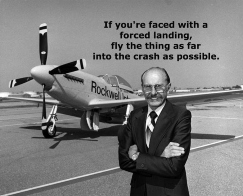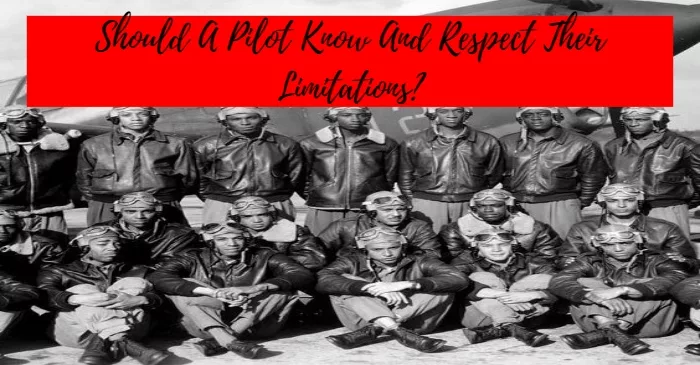
It wasn’t long after I got my brand new fresh private pilot’s license that I discovered some things about myself and I asked, should a pilot know and respect their limitations?
Should A Pilot Know And Respect Their Limitations?
Yes, a pilot needs to know and respect their limitations. This must be addressed as soon as possible in Flight Training. Truthfully it should be addressed by your flight instructor early on if you do not know already.
Should A Pilot Know And Respect Their Limitations?
1. Physical Limitations.
It is up to you to assure your physical ability to fly an aircraft. Being sick and hurt can seriously affect your abilities and you are the only one who can evaluate that you are physically fit to fly.
Sometimes outside influences can affect your judgment on whether you should fly or not. It can be very difficult to decide if you can conduct a safe flight.
From my own experience, I would advise to never take any unnecessary risk when it comes to health and flying.
If there is any doubt in your mind, make a safe decision.
2. Emotional Limitations.
Any type of emotional distress can become an issue flying an aircraft.
When you are taking the responsibility of lives and property you must not be carrying any type of emotional baggage.
For example, if you are in a situation where one of those things in life comes up that overwhelms you it might be wise to consider how badly your judgment is affected.
If you’re in an airplane your attention should be just on that airplane and the safe outcome of the flight.
Self-assessment is necessary.
3. The Brain.
We all seem to tend wanting to get things done and when we start to rush critical steps that compromise safety can be overlooked.
I once rushed to meet a departure time and overlooked the removal of a tail rudder gust lock because I failed to do my final walk around the aircraft. This could have proven to be quite disastrous, but I luckily landed the aircraft and removed the gust lock.
Nothing more than my pride bruised and the embarrassment of having to tell Salt Lake Center to delay my flight plan which meant my return to the airport was heard on the radio.
We can put ourselves in jeopardy by trying to take on more than we can handle and put ourselves in our passengers and airplane at risk.
Anything that could slow down your process of thinking or feeling disoriented in any way should put up a red flag.
4. Self Evaluation.
When it comes to flying airplanes, the Captain is the final Authority in all aspects. The enormous responsibility of the flight depends upon the integrity of the Captain to have deemed themselves duly competent to fly.
This includes health, mental acuity, and being emotionally stable.
Taking on more than they can handle can put themselves, their passengers, and their aircraft at risk. It is the responsibility of the pilot to recognize their limitations and take appropriate actions, such as seeking additional training, consultation with other professionals, or even grounding themselves if necessary. Ultimately, doing so will ensure a safe and successful flight.
5. Regulations:
You can’t do anything without rules and airplanes come with a whole pile of them. Along with all the pilot Reg’s and airplane reg’s, you’re kind of swamped with all the rules to learn. Along with all of the other stuff that you’re supposed to learn. But I thought it would be wise to just mention it as there are limitations on almost anything involved in aviation now
It’s complex enough with just doing Private Pilot mandatory flying rules but at the commercial level it’s insane. I thought I should add a little bit more about regulations so I think it’s wise to put some effort into reading the Private Pilot regulations.
You’ll find a video below about the regulations for recreational Pilots which I think will give you an idea of what you have to know.
5. Being Apprehensive.
I know I am not the only pilot who feared learning to fly. Not so much that I was afraid of an airplane but it was more of a pride issue. I would have been mortified to fail! I was 20 when I started, without any concept of how it would turn out. Now, past my years of flying, it is just memories. But, those memories are quite clear about the things I had heard about and my own frightening experiences.
I knew I needed all the help I could get while learning to attempt to master the skill of maneuvering an aircraft safely and professionally.
I showed no fear of anything under any circumstance. It was an unwritten and never spoken rule for pilots. There is a part of every flight that preponderates the unknown. When things go wrong during a flight the awareness of where you are in relation to a safe place to land becomes a pilot’s total focus along with flying the airplane. An immense workload.
Flying an aircraft requires a great deal of skill, knowledge, and experience. Pilots must be aware of their capabilities and be prepared to acknowledge their limitations to ensure safe and successful flights. Both physical and cognitive limitations can impact the safety of the flight, and pilots must recognize when they have reached their limits and take appropriate action, such as communicating with air traffic control or seeking assistance from a co-pilot. Not respecting this endangers lives and property.
Related: How Does A Pilot Make Good Landings? (5 Smooth Feelings)
